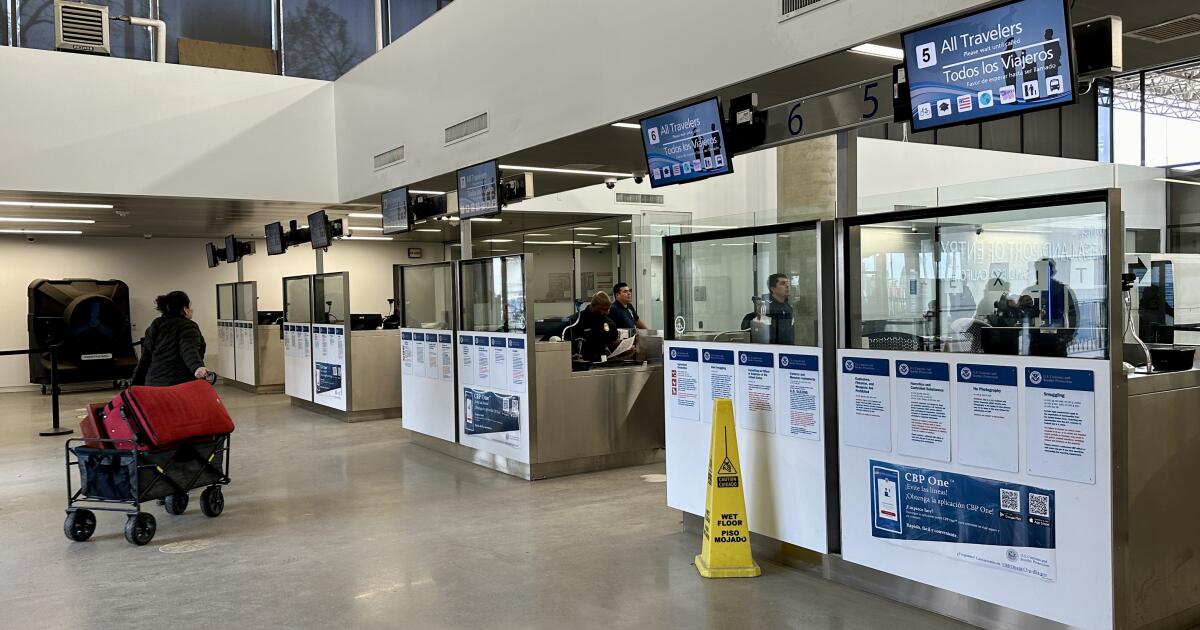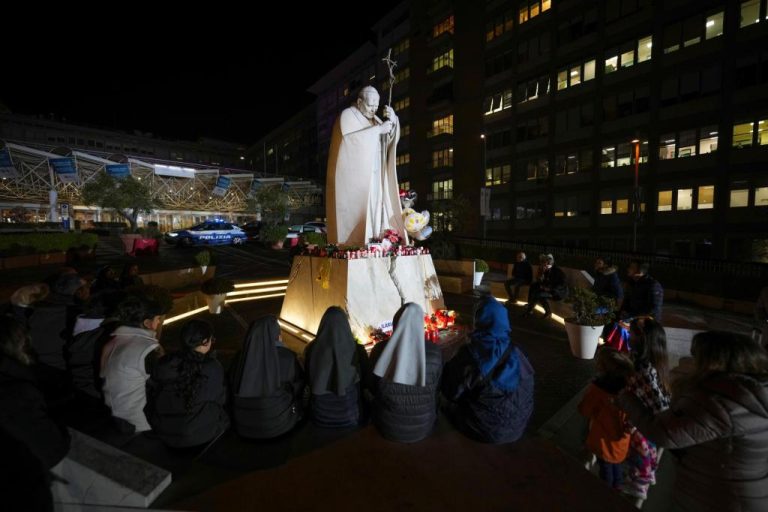
The federal government has completed a $134 million modernization and expansion project at the Otay Mesa Port of Entry that includes more processing capacity for both pedestrians and commercial vehicles.
The project — which started in May 2020 — represents the largest investment at the port of entry since 1986, said Ramón Riesgo, project director for the southern border with the U.S. General Services Administration.
Some major stages of the project were completed last year, but the agency announced the project’s overall completion Thursday.
The last stage included the repaving of a walkway used by travelers arriving from or heading to Mexico. From 2020 to date, the commercial lanes for cargo trucks increased from nine to 16, and lanes available at the pedestrian crossing doubled from six to 12.
However, travelers shouldn’t expect all pedestrian lanes to be open at all times, since it still depends on staffing and demand.
“What it allows us to do is manage our resources a little more effectively and efficiently,” said Wilson Portocarrero, public affairs liaison with U.S. Customs and Border Protection.
“Especially, during the peak travel times when we need to move some of our resources here at (the) pedestrian (crossing) to break those longer wait times that some of the folks are experiencing, or at the same time, we could also pull back and focus on the vehicle wait times, so we minimize that impact as well,” he added.
The Otay Mesa pedestrian crossing is used by an average of 7,500 people daily. Peak travel times are weekdays from 4:00 a.m. to 10:00 a.m., and from noon to 8:00 p.m. on weekends, Portocarrero said.

A line of trucks line the Otay Mesa Port of Entry on Sept. 23, 2021.
(Ana Ramirez/The San Diego Union-Tribune)
Portocarrero praised GSA’s work for a “remarkable project” that will allow CBP to “facilitate legitimate trade and travel.”
The Otay Mesa crossing is the third-busiest commercial port of entry along the U.S.-Mexico border, officials said. The port processes over $13.5 billion in exports and $37.4 billion in imports, and nearly 1 million commercial trucks, according to GSA.
The project included a new return lane to Mexico to allow trucks denied entry into the country to use a dedicated lane that doesn’t affect entering traffic.
Other improvements were the construction of a commercial annex building, which houses a new enrollment center for Trusted Traveler Programs, such as SENTRI and Global Entry.
The I-94 permit office, which was relocated during construction, recently returned to its previous location inside the pedestrian building, officials said. The I-94 permit or “permiso,” is required for international visitors planning to travel farther than 25 miles from the border.
A new U.S. Department of Agriculture Animal and Plant Health Inspection facility was also built, as well as a pedestrian bridge, visitor parking lot and an employee parking structure.
The project didn’t include additional lanes to the regular vehicle border crossing. Officials have noted that there’s not much space left for construction. There’s also an ongoing project to build a second Otay Mesa border crossing for both vehicles and commercial crossings.
GSA is currently working on a separate $1.6 million project funded by the Bipartisan Infrastructure Law to pave the port’s pre-primary vehicle inspection queuing area with more environmentally friendly materials. It is expected to be completed this spring.







